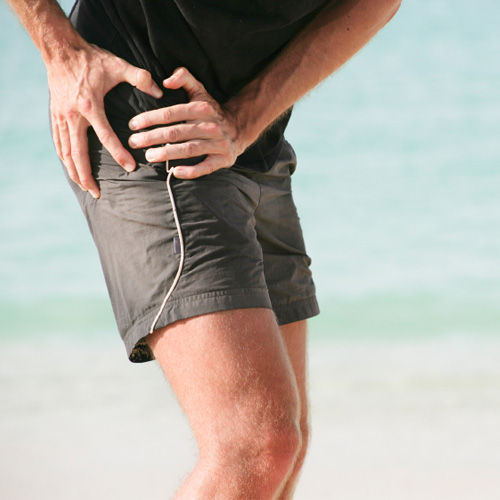
20 Oct Maintaining a Mobile Hip
By Matthew Zaudtke, PT, DPT, OCS, ATC, CSCS
As with many sports and daily activities, ideal mobility and flexibility throughout the body is important. We have to maintain a proper balance of strength and flexibility to ensure we don’t “break down”. There are few areas in the body where proper mobility is more critical to achieve and maintain then our hips. Whether it be swinging a golf club, training for a marathon, squatting down to garden, or simply walking the neighborhood, hip mobility is vital to maintain fluid movement throughout our body.
When mobility is lost in our hips, we risk both local injury along with injury to areas above or below the hips (low back, knees, ankles, etc.). Loss of hip mobility can result in arthritis, labral tears, hip impingement, bursitis, strains, and other overuse injuries. In many cases, poor hip flexibility results in increased strain to the lower back causing pain and impaired motion to our spine.
As a physical therapist, we are optimally trained to evaluate for these type of mobility issues to address both local effects of hip tightness and the potential impact of hip tightness on other areas of the body. Physical therapists choose specific activities and treatments to help restore normal movement in the hips and legs. These might begin with “passive” motions that the physical therapist performs for you to gently move your hip joint, and progress to active exercises and stretches that you do yourself. By maintaining quality, fluid motion in your hips, you will allow your body to move effectively no matter your level of activity. Please consider taking the time to talk with a Body One physical therapist to help you keep your hips moving.




